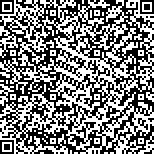| This article has been:Browse 463Times Download 954Times |

scan it! |
|
|
| DOI:10.13522/j.cnki.ggps.2025008 |
|
| A deep learning approach for flood inundation mapping in polarimetric SAR images using DCNv3 and vision transformer |
|
ZHANG Chunfang, LIU Peng, WANG Ruili, PAN Deng, MENG Wenmin, YU Haiyang
|
|
1. Henan Jiaozuo Hydrology and Water Resources Forecasting Sub-center, Jiaozuo 454003, China;
2. Land and Spatial Survey and Planning Institute of Henan Province, Zhengzhou 450053, China; 3. Key Laboratory of Mine Spatio-temporal Information and Ecological Restoration, Ministry of Natural Resources, Henan Polytechnic University, Jiaozuo 454003, China;
4. Institute of Natural Resources Monitoring and Comprehensive Land Improvement of Henan Province, Zhengzhou 450016, China
|
| Abstract: |
| 【Objective】Accurate flood inundation detection using Synthetic Aperture Radar (SAR) images remains challenging due to limitations in existing models and the lack of high-quality annotated datasets. This study aims to address these issues by developing a dedicated flood inundation detection dataset based on polarimetric SAR data and proposing a novel deep learning model, FWSARNet, that integrates Deformable Convolutional Networks v3 (DCNv3) and Vision Transformer (ViT) to improve detection accuracy and robustness.【Method】A polarimetric SAR-based dataset was constructed using Sentinel-1 imagery, with extensive data augmentation to enhance model generalization. An efficient feature extraction module was designed by combining DCNv3’s spatial adaptability with ViT’s global feature modeling. This module served as the backbone of the FWSARNet model, which was then trained and validated on two custom-built datasets: Henan720 and Hebei727.【Result】The proposed FWSARNet model outperformed existing deep learning models in delineating complex flood features, including water body edges, small patches, and narrow linear segments. It achieved mean Intersection over Union (mIoU) values of 88.53% on Henan720 and 92.50% on Hebei727, indicating superior performance in diverse flood scenarios.【Conclusion】FWSARNet demonstrates high accuracy and adaptability in flood inundation detection from SAR images and is well-suited for emergency disaster response applications using polarimetric SAR data. |
| Key words: lood extent detection; polarimetric SAR; deformable convolution; vision transformer |
|
|